This guide was created specifically as an aid for youth forestry knowledge competitions, including 4-H and Future Farmers of America. Along with a collection of the listed beetles, it is suitable as a beginner’s introduction to the most important pine pests in Florida. These materials do not serve as a standalone identification guide.
Bark and Ambrosia Beetles—Overview
Bark and ambrosia beetles are a diverse group of beetles that can be found boring into and living in trees throughout the forest. While many of them are beneficial and feed only on dead trees, some bark and ambrosia beetles can become invasive and kill the trees they live in when introduced to new areas through human transport of wood products. Bark beetles feed on the nutrient-rich phloem. The few species of bark beetle that attack living trees overwhelm the tree defenses by attacking in large numbers. Ambrosia beetles are very interesting organisms because they carry fungal spores in an organ on their body called a mycangium. Once they burrow into a tree, the spores from the mycangium grow into fungi, which the beetles and their offspring feed on. This makes ambrosia beetles an insect that farms its own food! However, this also makes invasive ambrosia beetles even more dangerous because the fungi they carry can infect and kill the tree.
Because we need to be on the lookout for invasive bark and ambrosia beetles in our forests, it is important that we be able to identify them.
Characteristic Features of Bark and Ambrosia Beetles:
- Cylindrical bodies
- Very small, always less than 1 cm
- Bent antennae with a club at the end
- Large, round head partially hidden in pronotum
- Pronotum—a hard plate that covers the thorax of an insect (in bark and ambrosia beetles, the head emerges from underneath the pronotum)

Credit: Jiri Hulcr, UF/IFAS
Black Turpentine Beetle
Dendroctonus terebrans
- Large (5–8 mm)
- Largest of the bark beetles in the southeastern United States
- Rounded posterior

Credit: Jiri Hulcr, UF/IFAS
Southern Pine Beetle
Dendroctonus frontalis
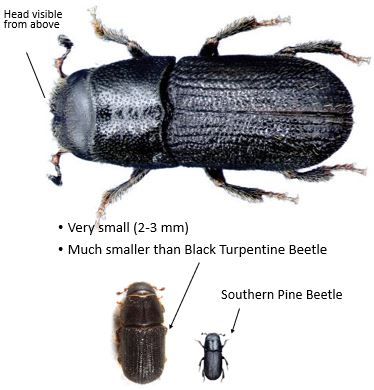
Credit: Jiri Hulcr, UF/IFAS
Ips Engraver Beetles
Ips species
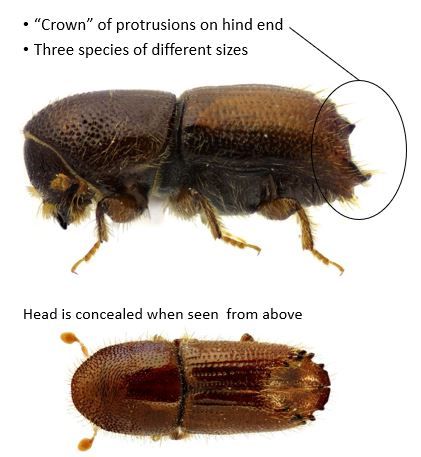
Credit: Jiri Hulcr, UF/IFAS
Ambrosia Beetles
Many Species
- Usually tiny (less than 3 mm)
- Related to bark beetles, but feed on fungus inoculated into trees
Redbay ambrosia beetle
- Dark and shiny, pointed posterior
- Spreads a pathogen of redbays and avocados
Granulated ambrosia beetle
- Orange/red color
- Rough posterior
- Tree nursery pest
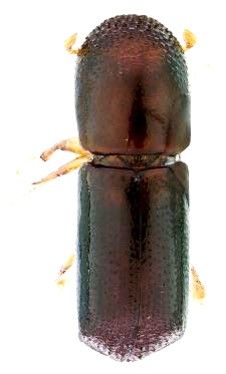
Credit: Jiri Hulcr, UF/IFAS
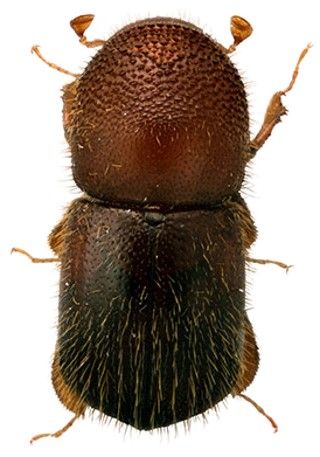
Credit: Jiri Hulcr, UF/IFAS
Reproduction Weevils
Hylobius pales & Pachylobius picivorus
- 8–12 mm
- Sometimes have scattered light patches, or are solid black
- Long snout and legs
- True weevil, not a bark beetle
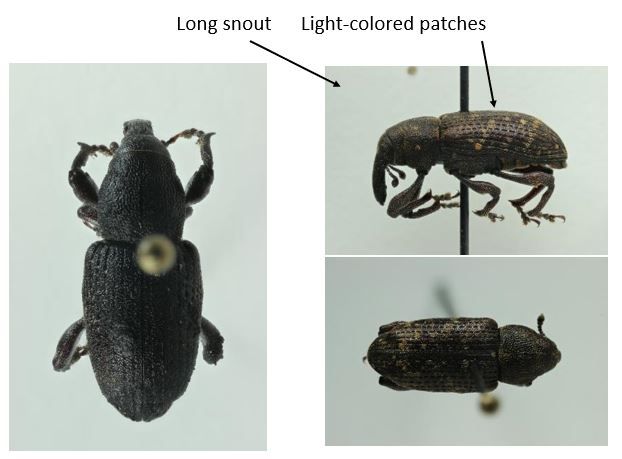
Credit: Sawyer Adams, UF/IFAS
Longhorn Beetle, Pine Sawyer
Monochamus spp.
- Large, long antennae
- Note that the antennae are not clubbed and not bent
- Long legs
- Larvae chew in dead wood
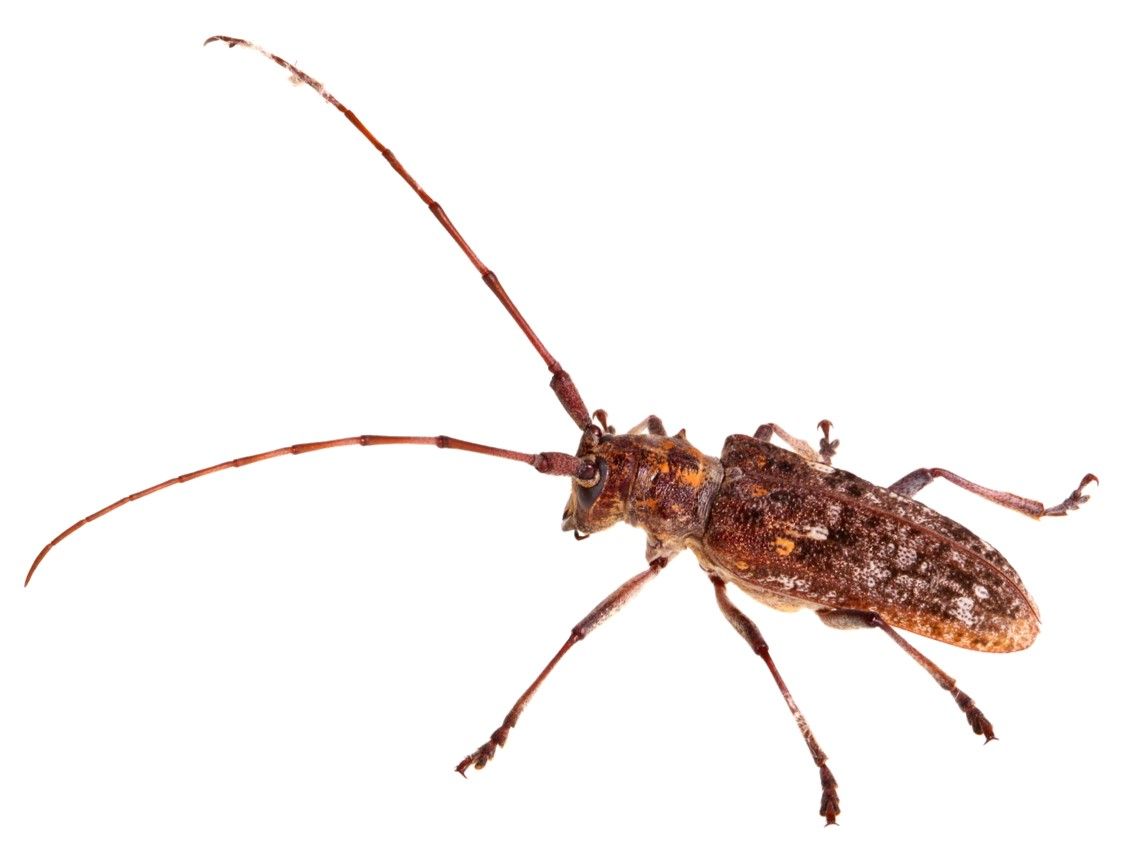
Credit: Stephen Goodwin/Alamy Stock Photo